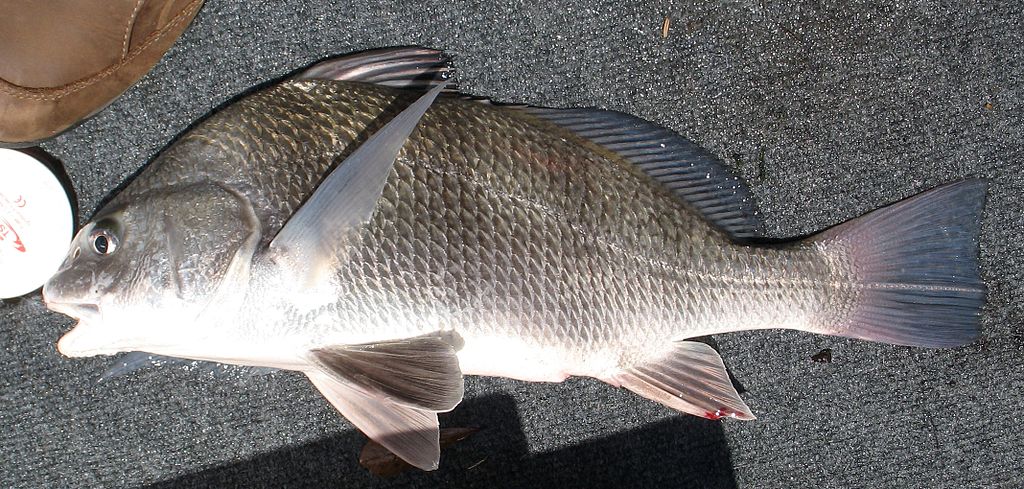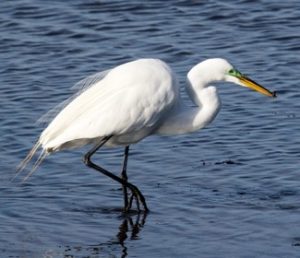Black Drum
Pogonias cromis

Physical: The black drum is a grey or black fish with a high arched back and light belly. They have 4-6 black vertical stripes on their sides, which appear as juveniles and fade with maturity. They also have small whisker-like barbels on their lower jaw and large teeth plates. With an average length of 19.7 in (50 cm) and a maximum recorded length of 67 in (170 cm), they are the largest drum species. Like other drums, they are named for the loud drumming noise that adults make when spawning.
Habitat: Black drum live in marine and brackish water habitats. They are bottom dwelling fish common in bays, lagoons, and river mouths. Juveniles tend to be in estuaries. Their native range spans from Nova Scotia to northern Mexico in the northern hemisphere, and southern Brazil to Argentina in the southern hemisphere.
Feeding: Black drum are bottom feeders. They feed on molluscs and crustaceans, which they find using their barbels. Their strong teeth crush oysters and other shellfish.
Breeding: Spawning season lasts from April to June. A female can release up to 32 million eggs in a year, and can lay eggs every three days during the course of the season. Eggs hatch within 24 hours and juveniles reach adult form in a few weeks. However, they do not fully mature to reproductive age until they are about 4 years old.

Sign up for email or connect through social media.